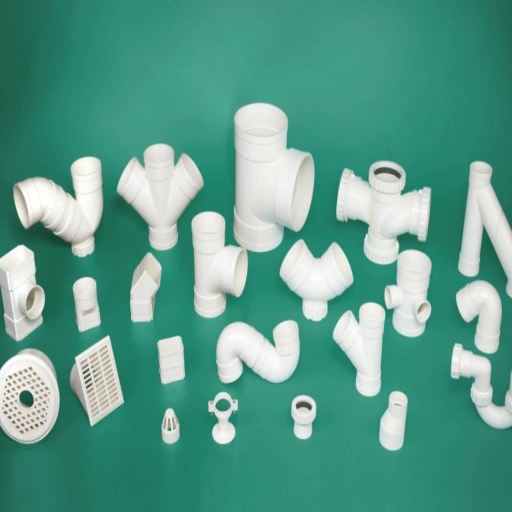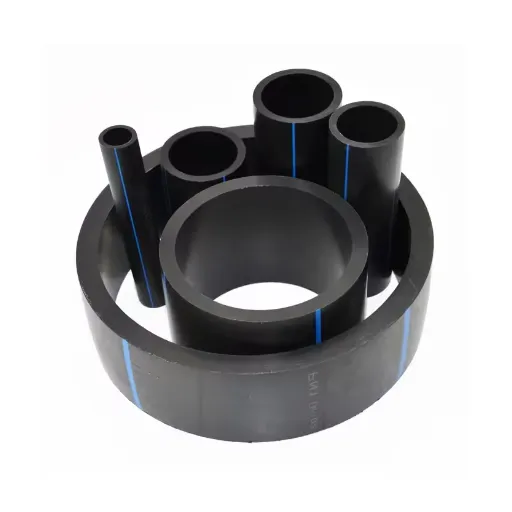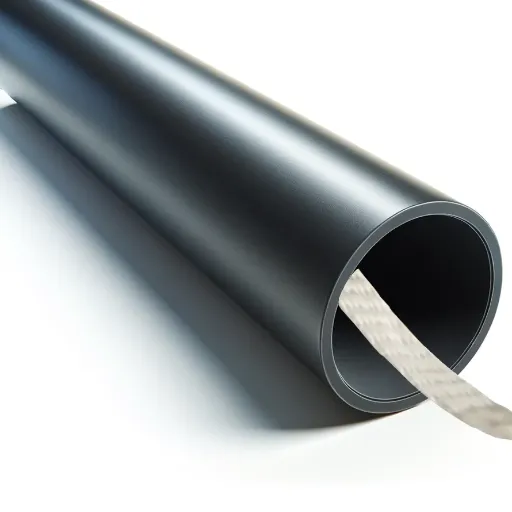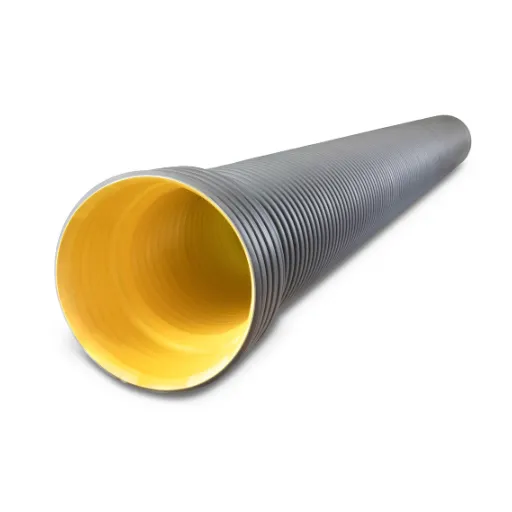When it comes to pipe installations and repairs, selecting the right coupling is a critical decision that can impact the durability, functionality, and reliability of your project. PVC couplings are among the most versatile and widely used connectors in plumbing and construction due to their affordability, ease of installation, and compatibility with various piping systems. This comprehensive guide is designed to provide you with a detailed overview of the different types of PVC couplings available, their specific applications, and the essential factors to consider when choosing the appropriate fitting for your project. Whether you are tackling a home plumbing repair or managing a large-scale commercial pipe system, this resource will equip you with the technical insights needed to make informed decisions and ensure successful outcomes.
What Are the Different Types of PVC Couplings?
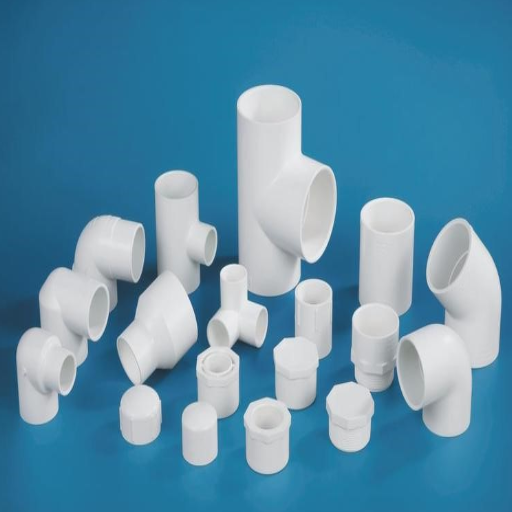
Understanding Slip Couplings and Their Uses
Slips Couplings are efficient for household and agriculture piping systems. They are efficient PVC fittings because they enable users to connect pipes in a straight line seamlessly. Their efficiency stems from the fact that they slip over pipe ends and form sealed joints which preserve the structural integrity and flow of the system. Unlike other Pipe Fittings, Slip couplings are also low to moderate-pressure systems. The following are some technical characterization considerations for slip couplings:
- Nominal Pipe Size (NPS): Ensure compliance by matching the conic lining’s diameter to the mating pipe’s diameter which is standardized for PVC materials.
- Pressure Rating (PSI): Confirm the conic lining’s ability to withstand system pressure which is indicated in a safe value like Schedule 40 or Schedule 80, with the latter set of conic linings meant for higher pressures.
- Temperature Tolerance: Check the operating temperatures of the system as PVC performs adequately within 33°F and 140°F (0.5°C and 60°C).
- Material Standard Compliance: Make sure the conic lining complies with ASTM or other vetted industry standards for reliability.
I can now select the more complicated anomalies of Slip Couplings without worrying about the issue of efficiency, reliability, and strength of the joint seal.
Exploring Threaded Couplings for PVC Pipes
Threaded couplings designed to handle PVC pipes are created for the disassembly of systems and fittings that need to be adjusted more than once. The fittings, in this case, use precise male and female threading for connection turnings that seal tightly together and do not leak.
- Performance with High-Pressure Applications: The use of collegial systems of high intensities of pressure is not recommended with these couplings, as the threads can cause too much weakening for the structure. They are ideal for low-pressure up to medium-pressure systems, such as 150 psi at low working standards and with some specifics of products and systems.
- Temperature Compatibility: PVC threaded couplings are operative between 0.5 and 60 degrees Celsius. Exceeding the range can compromise the durability of the material and threads thus resulting in deformation or failure of the threads with stress.
- Sealing and Reliability: To secure the reliability of the joint of the parts and to seal the joint in a way that will make it leak-proof, I would opt for PTFE tapes that prevent leakage that arises from the joints failing due to poor threads or improper tightening.
- Compliance with Standards: It is my practice to verify that the threaded couplings meet the ASTM D2467 spec or matching requirements for other PVC fittings. Achievement of compliance means that the materials and the design used meet the relevant industry standards for performance and safety.
Having these criteria, I can identify and use threaded couplings that are most appropriate for the system and the set objectives in efficiency, reliability, and safety.
The Versatility of Reducing Couplings in PVC Systems
Decreasing couplings in PVC systems is critical in ensuring that pipes with different diameters can be connected without compromising the functionality of the entire system. Meanwhile, these couplings are very useful in meeting different flow as well as system configurations.
- Material Composition: Made of PVC with a Hydrostatic Design Basis (HDB) of not less than 4,000 psi at 73°F. This ensures the material will withstand stress and volatility variability.
- Pressure Rating: Designed to withstand a minimum of 150 psi at 73°F. This is ideal for typical cold water distribution systems and other low-pass applications.
- Dimensional Standards: These fittings are as per ASTM D2466 concerning PVC Schedule 40 fittings; this ensures compatibility with the mating pipe systems.
- Temperature Resistance: Efficiently operates at 33°F to 140°F, good for moderate environmental conditions.
After analyzing the above technical requirements, I can support my decision to reduce couplings in PVC systems. These fittings have an economical appeal because of their ease of use, while at the same time serving to enhance the level of reliability and durability of the system configurations.
How Do I Choose the Right PVC Coupling for My Project?
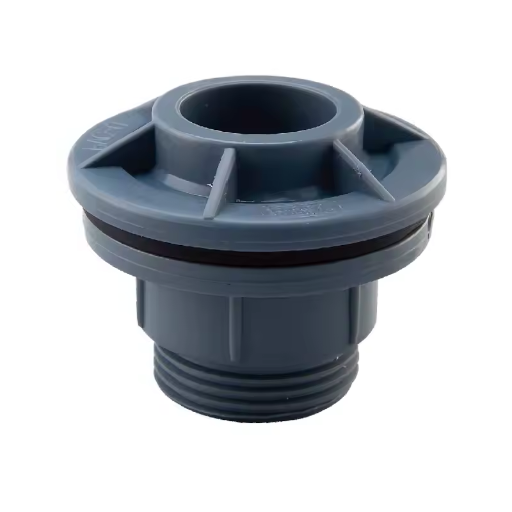
Considerations for Different Pipe Diameters
In cases where the pipes have different diameters, my selection criteria for the coupling focuses on the ability to size and performance requirements. First, I take the outer diameter (OD) of the connection pipes as this will determine the size of the required coupling. Then I check if the coupling’s pressure and temperature ratings are compatible with the working conditions of my system. For example:
- Pipe OD Range: A coupling size needs to be selected and matched to the outer diameter of the pipes. For example, 1/2”, 3/4” and 1” couplings are common.
- Pressure Rating: The coupling should be able to withstand the required psi from the system, for example, 150 psi for standard PVC applications.
- Temperature Range: Couplings need to be verified for operation in the expected ambient temperatures, for example, 33°F to 140°F for most PVC systems.
Aligning these factors with the requirements of my project ensures that the assembly of the system is safe and efficient.
Selecting Couplings for Various PVC Applications
To fulfill the criteria stated regarding the selection of couplings for PVC fittings, I analyze each element systematically:
- Compatibility of Pipe Size: I select couplings that correspond to the exact measuring Outer Diameter (OD) of my pipes for a snug fit. Normally for PVC systems, sizes vary from 57 inches to 4 inches, so I note the measurements before adding them to the cart.
- Flexural Pressure: For common pressure-rated applications, like irrigation and drainage systems, I ensure that the coupling is rated for 150 psi and above. Withstand joints failure, higher pressure requires higher rated components, and so on.
- Thermal Range: My System operates on an approximate ambient range of 50 degrees Fahrenheit to 120 degrees Fahrenheit. For that, I also make sure that selected couplings, which are rated from 33 degrees Fahrenheit to 140 degrees Fahrenheit, won’t compromise material integrity due to temperature changes.
With these specifications vetted against the conditions of the project, I select couplings that provide reliability and system compliance with performance standards.
What Are the Advantages of Using Different PVC Coupling Types?
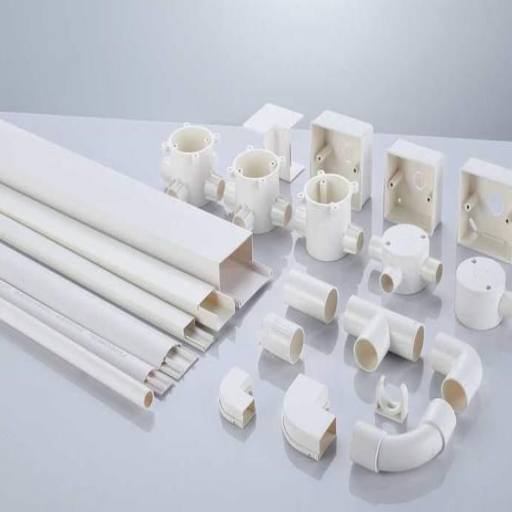
Benefits of Socket Fittings in PVC Piping Systems
I observed that socket fittings in PVC piping systems have several advantages, especially in terms of productivity and dependability. In the first place, socket fittings guarantee a sturdy and leak-proof joint when glued, and this enhances the system’s integrity. Performance preservation, especially under pressure conditions rating up to Schedule 40 for PVC pipes, is crucial. Schedule 40 PVC pipes typically support 280 PSI, and schedule 80 support 400 PSI at 73 degrees Fahrenheit.
Coupled with the above benefits, socket fittings are also cost-effective when weighed against opposing connection methods such as threaded or flanged connectors. These fittings greatly reduce both material and labor costs. In comparison with other aids, thermal expansion and contraction reliability is significantly improved within the ranges of 33 to 140 degrees Fahrenheit.
Most importantly, they further facilitate simpler installation procedures. Their design guarantees ease in alignment and assembly for both small and large applications. For these reasons, socket fittings are the most flexible and practical means for PVC piping systems.
Strengths of Flanged Couplings in Industrial Applications
Due to their robust construction, flanged couplings have proven to be a sine qua non for any industrial environment as they provide some degree of mechanical dependability and the ability to withstand both high temperatures and high pressure. These couplings are specially designed for pipeline systems that require frequent maintenance because they can be disassembled and reassembled without compromising the seal. These couplings are highly adaptable and are said to be effective on pipeline nonparallelism and a vast variety of industrial fluids ranging from chemicals, oil, and steam.
- Pressure Ratings: The working pressure of flanged couplings is 150 to 2,500 PSI, depending on the materials used and the flange class such as ANSI B16.5.
- Temperature Resistance: Couplings made from Carbon steel and stainless steel can withstand temperatures in the range of 20 to 1000 degrees Fahrenheit.
- Corrosion Resistance: Stainless steel alloys and galvanization coatings provide strong resistance in corrosive environments.
- Torque Capacity: Designed to efficiently transfer large amounts of torque. In regions where heavy-duty applications are deemed necessary, the risk of failure is considerably reduced.
In a resting position, flanged couplings showcase high strength, constant technological adaptability, and utmost performance which is why the couplings find themselves favored in industries with high standards.
How Do I Properly Install PVC Couplings?
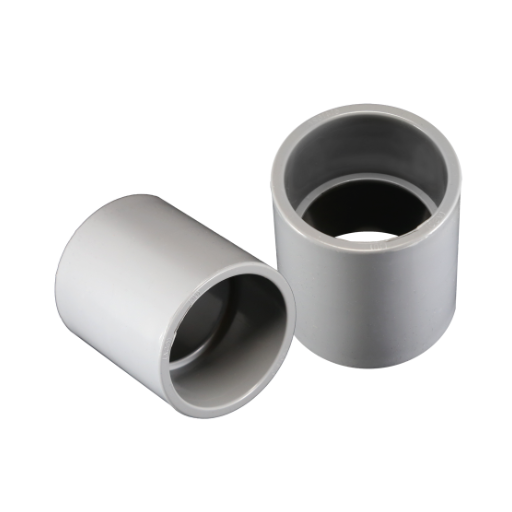
Step-by-Step Guide to Cementing PVC Couplings
- Measure and Cut the Pipe: With the help of a hacksaw or pipe cutter, carefully measure and cut the PVC pipe to the necessary length. Remember to smoothen the square edges of the cut sides for a snug fit.
- Clean the Pipe and Coupling: Employing a PVC pipe cleaner or primer, clean the ends of the pipe and the interior sides of the coupling thoroughly. This eliminates any grime, oil, or contaminant, hence increasing adhesion.
- Apply Primer: Apply primer on the outer sides of the pipe and the inner side of the coupling. Do not forget to apply smoothly and uniformly, as it helps in enhancing the bonding. In some cases, industrial strength adhesives, the manufacturer may include this step so make sure to refer to them.
- Apply PVC Cement: Use the applicator to spread a thin coat of solvent cement on the end of the pipe and inside the coupling and ensure that it is even. The coverage must be sufficient, but in a way that dripping does not occur. Improper application may weaken the bond.
- Join the Parts: Place the pipe inside the coupling without wasting any time. While inserting it, ensure to twist it 1/4 so that the cement is evenly spread. Maintain the position for 15-30 seconds to make sure the connection is intact until the solvent begins setting.
- Wash the Cement residue: Utilize a clean rag to wipe off the cement along the joint which prevents untidy work and enables the joint to look well-finished.
- Follow Curing Period Requirements: This varies depending on the type of cement as well as the temperature and weather conditions. Check with the manufacturer’s instructions for determining curing time. Usually, the bond is fully cured within a day.
To correctly cement the PVC coupling, I focus on cleaning and properly priming the pipe and coupling before solvent cement is applied. To join, they are placed one inside the other, twisted, and then retained at their relative position until the setting occurs.
Tips for Threading PVC Couplings Correctly
- Take Care of the Pipe Hose: Cut your PVC pipe at a right angle using a pipe cutter or a fine-tooth saw. This prevents cut-off pieces from getting lodged. Also, ensure to remove burrs and rough edges using a deburring tool to prevent obstruction of threading.
- Choosing the Suitable Tool for Threading: Select a pipe of the required diameter with a PVC pipe threader. Preferably use a high-grade threading die with sharp teeth for better, more accurate threads that reduce the chances of leakage.
- Use a Lubricant or Threading Oil: Apply a pipe-suitable threading oil or lubricant before beginning with threading. In the process of threading, this reduces friction, protects the tool from wear, and enables sharp cutting of the threads while protecting the pipe from being damaged in the process.
- Thread the Pipes Securely and Sufficiently: To prevent any movement, secure the PVC pipe within a pipe vice or clamp, before using the tread. Using the pipe, start rotating at a steady pace while the threading conforms to the ANSI/ASME B1.20.1 standard of the application. If needed, stop periodically to ensure threads are still evenly spaced.
- Examine the Threads to Make Sure Consistency is There: Use a thread gauge to scratch off the threads while maintaining the required depth after securing the threads to ensure proper alignment with the technical specifications. It is recommended to have an inspection of the threads for relevancy.
- Secure Integral Parts of the Structure: Use PVC-rated Teflon tape or thread sealant to seal the joint effectively. When using the tape, remember that the direction must be reversed to that of the thread for the seal to be effective when the coupling is done.
For any pipeline construction to be useful, I double-check the threading operations to make sure they are accurate, reliable, and easy to inspect. Every step is associated with the requirements of the existing technical regulations – everything aims to achieve the required reliability and quality of the connection.
Best Practices for Connecting Pipes of Different Sizes
When joining pipes of various diameters, I make sure to follow a procedure that guarantees an optimal fit. Here are some important best practices:
- Choose the Proper Reducer or Adapter: A reducer or adapter must be used, which takes into account the varying dimensions of the pipes. For instance, while connecting a PVC pipe, it is important that the fitting is made out of rated PCV and is considered to be within the appropriate pressure class.
- Check the Compatibility Compliance: Ensure compliance with ASTM or ISO standards to consider the safety and compatibility of the used pipes and fittings. For example, ASTM D2466 deals with the standard specification for PVC fittings, and ISO 4437 deals with polyethylene pipes.
- Take Inner Diameter and Outer Diameter (ID and OD) Measurements: The inner diameter and outer diameter of the pipes to be joined must be accurately measured. Unwavering in the right measurements guarantees there are no risks of leakages. For example, a PVC Schedule 40 pipe with a nominal size of 2 ” has an OD of 2.375’.
- Use Appropriate Sealing Techniques: Depending on the type of pipe, choose the sealing methods that will properly bind the joint. Teflon tape rated for the type of pipe being used is great for threaded connections. Nonthreaded PVC joints can be sealed with solvent cement. Always ensure that the selected sealant has a certificate of compliance for the fluid or gas that it will be sealing.
- Account for Flow Rate Efficiency: When pipes are stepped in size, make sure there’s an allowance for change in flow rate as well as pressure alongside. Like in other instances, a friction loss calculator helps with preliminary design within acceptable bounds to reduce pressure drop during increased flow.
By these factors, I confirm that the joints are precisely designed to be strong and compliant for the intended purpose.
What Are Common Problems with PVC Couplings and How to Solve Them?
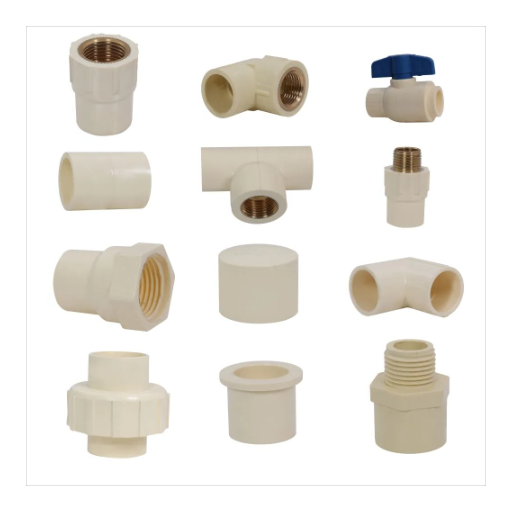
Troubleshooting Leaks in PVC Coupling Connections
Leaks in PVC coupling connections can arise from various factors, including improper installation, material degradation, or incorrect choice of sealant.
- Incorrect Assembly: In the case that the joint suffers expansion or does not easily rotate, I actively take apart the joint and apply the necessary torque during installation in terms of threaded fasteners.
- Compatibility of Material: I check that the coupling material is not more than restrictive for the fluid or gas it is expected to carry. For instance, certain chemicals or very high temperatures over 60 degrees Celsius (140 degrees Fahrenheit) will cause the degradation of PVC. If incompatibility is revealed, the solution is to employ a high-end material like CPVC.
- Performance of the Sealant: I check if, for example, the tape or cement worked as expected, like in the case of non-plumbing Ptfe tape where it has to be rated for plastic threads and the cement has to be fresh.
- Pressure and Flow Constraints: I suggest instituting pressure regulation or switching to a more robust system if over-pressure beyond the PVC’s maximum rated pressure (commonly, it’s 150 psi for Schedule 40) is detected.
Steps need to be undertaken systematically. By doing so, I will be able to trace back the leakage and close them effectively within a framework of regulations. Each recommendation aligns with industry standards and ensures operational reliability.
Addressing Alignment Issues in PVC Piping Systems
In dealing with alignment challenges, I take a systematic approach to maintaining mechanical integrity as well as long-term system functionality. This includes:
- Initial Assessment: My first step involves evaluating the piping configuration to identify any misalignments caused by improper installation or environmental factors like ground settlement or thermal fluctuations.
- Stress Assessment: There can be substandard alignment which can introduce undue loads on the joints and potentially compromise solvent welded or threaded joints. This requires additional refinement. I assess the thermal movement restriction of the system which for PVC is roughly 0.36 inches per 10°F temperature hike for every 100-foot section of pipe.
- Support Modification: There are cases where supports are placed at locations that are neither adequate nor spaced in a sufficient manner which can cause misalignment. Effective measures include adjusting supports considering guidelines such as horizontal spacing over 4 feet for every 1-inch Schedule 40 PVC in horizontal settings to prevent over-stressing.
By systematically addressing these issues, I ensure the system as designed is afforded optimal operating conditions in the real world, accomplish the set engineering objectives, and minimize opportunities for joint leakage or failure.
Reference sources
Frequently Asked Questions (FAQs)
Q: What are the most common types of PVC pipe fittings?
A: The most common types of PVC pipe fittings include couplings, elbows, tees, reducers, adapters, and unions. These fittings are used to connect PVC pipes in various configurations, allowing for changes in direction, size, or branching of the piping system.
Q: How do I connect two PVC pipes?
A: To connect two PVC pipes, you can use a coupling fitting. First, clean the pipe ends and the fitting with PVC primer, then apply PVC cement to both surfaces. Quickly insert the pipe into the coupling and hold for a few seconds to allow the cement to set. For a secure connection, use both PVC primer and PVC cement as recommended.
Q: What are the different sizes of PVC pipe available?
A: PVC pipes come in various sizes, typically ranging from 1/2 inch to 24 inches in diameter. Common residential sizes include 1/2″, 3/4″, 1″, 1-1/4″, 1-1/2″, and 2″. Larger sizes are often used in commercial and industrial applications. It’s important to choose the right size fitting to match your pipe diameter.
Q: What is the difference between Schedule 40 and Schedule 80 PVC pipe fittings?
A: Schedule 40 and Schedule 80 refer to the wall thickness of PVC pipes and fittings. Schedule 80 has a thicker wall, making it stronger and more suitable for high-pressure applications. Schedule 40 is more common for residential use, while Schedule 80 is often used in industrial settings. It’s crucial to match the schedule of your fittings to your pipes for compatibility.
Q: How do I connect PVC pipes of different diameters?
A: To connect PVC pipes of different diameters, you can use reducer fittings. These fittings have two ends of different sizes and are designed to transition between pipes of varying diameters. Reducer couplings, reducer bushings, and reducer tees are common types used to join pipes of different sizes in a PVC piping system.
Q: What are threaded fittings and when should I use them?
A: Threaded fittings have a threaded end that allows for a screw-on connection. They are useful when you need to create a connection that can be easily disassembled for maintenance or modifications. Threaded fittings are commonly used to connect PVC pipes to other materials or to attach fixtures and valves to the piping system.
Q: How do compression fittings work with PVC pipes?
A: Compression fittings are used to join PVC pipes without the need for solvent welding. They work by compressing a rubber or plastic ring around the pipe as the fitting is tightened, creating a watertight seal. These fittings are particularly useful for temporary connections or in situations where using PVC cement is not practical.
Q: What are PVC flanges and how are they used?
A: PVC flanges are flat, circular fittings with bolt holes around the edge. They are used to connect PVC pipes to other flanged components, such as valves, pumps, or tanks. Flanges allow for easy disassembly and are often used in industrial applications where frequent maintenance or modifications may be required.
Q: How do I choose the right type of PVC pipe fitting for my project?
A: To choose the right type of PVC pipe fitting, consider factors such as the pipe size, pressure requirements, application (e.g., water, drainage, or chemical transport), and any specific local building codes. Match the fitting schedule (40 or 80) to your pipe, and select fittings that accommodate the desired flow direction and any necessary size transitions in your piping system.



